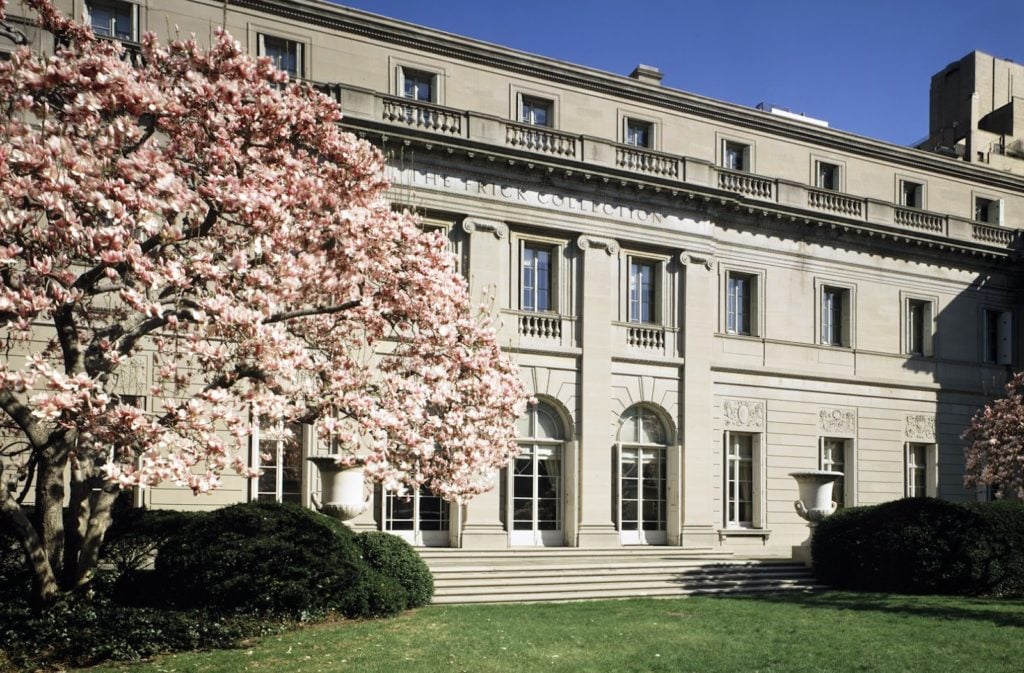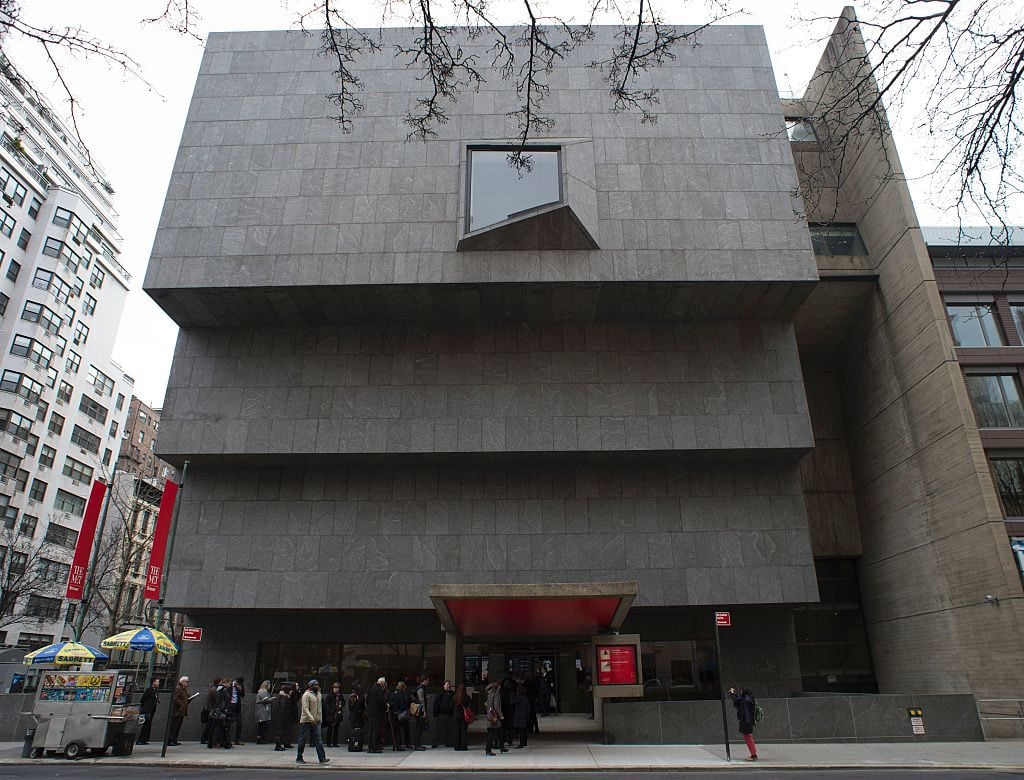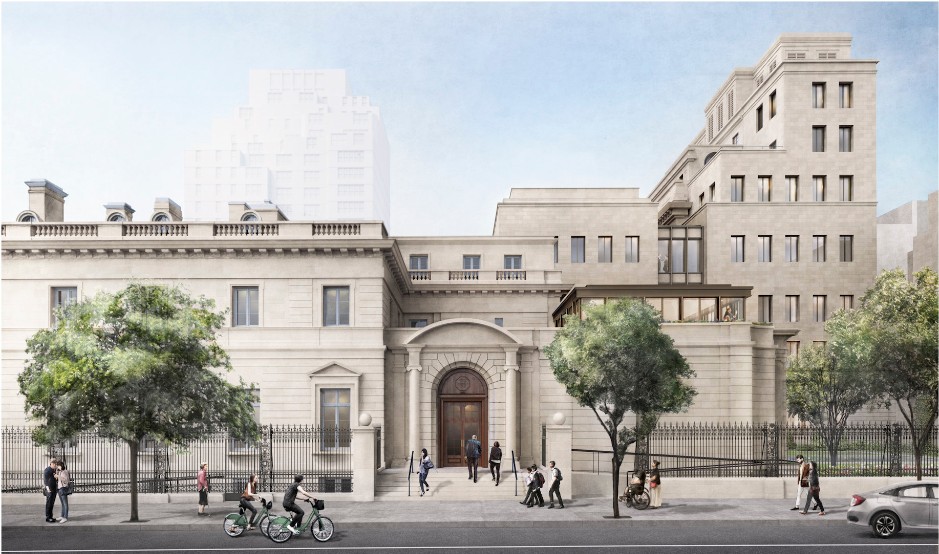Art & Exhibitions
The Frick’s Plans for the Breuer Building Promise to Spotlight Its Masterpieces ‘in a Completely Different Light’
The Frick Madison will eschew ornate period rooms and embrace its new Brutalist home.

The Frick Madison will eschew ornate period rooms and embrace its new Brutalist home.

Sarah Cascone

For at least the next two years, New York’s Frick Collection will trade its Gilded Age mansion home for the Brutalist digs of the former Whitney Museum of American Art, designed by architect Marcel Breuer in 1966. Now, the museum has announced its plans for the long-awaited change of venue.
The move promises a dramatic new setting for the Frick’s collection of Old Masters during the planned construction on an extensive renovation and expansion of the 1914 Henry Clay Frick House. The Frick Madison, as the temporary location in the former Whitney space has been dubbed, is set to open in early 2021 and will remain in operation until the project is done.
The museum isn’t going far distance-wise—the Breuer Building on Madison Avenue at East 75th Street is only an eight minute walk from the historic East 70th Street mansion—but the two buildings are miles apart stylistically.
“Audiences will be able to experience the collection reframed in an exciting new way,” said Frick director Ian Wardropper in a statement. “The minimalism of Marcel Breuer’s mid-century architecture will provide a unique backdrop for our Old Masters, and the result will be a not-to-be-missed experience, one that our public is sure to find engaging and thought-provoking.”

The Met Breuer. Photo: DON EMMERT/AFP/Getty Images.
This will be the first time that the Frick’s collection has left the confines of the mansion en masse, giving the curators license to change things up a bit and showcase the artworks outside of ornate period rooms.
The Frick Madison display will be organized chronologically, by region, with rooms dedicated to Northern European, Italian, Spanish, British, and French art. Rembrandt van Rijn, Johannes Vermeer, and Anthony van Dyck will each have dedicated galleries.
“Through fresh juxtapositions we will present our masterpieces in a completely different light, revealing unexpected relationships between subjects, artists, and media,” said Xavier F. Salomon, the museum’s deputy director and chief curator, in a statement.

Diego Velázquez, King Philip IV of Spain (1644). Courtesy of the Frick Collection.
“For example,” he added, “the Frick’s small but significant group of Spanish paintings, by artists from El Greco to Goya, will be shown together for the first time. The opportunity to deconstruct and re-present our collection in this way offers an invaluable learning experience that will enrich our understanding and enjoyment of the collection.”
The expanded space also provides the opportunity to showcase collection masterpieces normally in storage, like “Progress of Love,” a series of Jean-Honoré Fragonard paintings that the Frick has never been able to show together in its entirety. And sixteenth-century Mughal carpets that would normally be installed as functional objects can instead be displayed on the museum walls, encouraging a fuller appreciation of their artistry.

Jean-Honoré Fragonard, The Progress of Love: The Meeting (1771–73). Courtesy of the Frick Collection.
Among the other heavy-hitting Old Masters visitors can expect to encounter at the new location are Thomas Gainsborough, Jean-Auguste-Dominique Ingres, Titian, J.M.W. Turner, Diego Velázquez, and James Abbott McNeill Whistler, as well as works of the decorative arts ranging from Asian and European porcelain to Renaissance bronze figures to French enamels.
The Frick’s $160 million renovation plans, which look to repurpose 60,000 square feet of space and add 18,000 in new construction to the museum, have hit numerous roadblocks over the years. After preservationists fought to save the Russell Page-designed garden, Selldorf Architects went back to the drawing board, devising a plan that axed the museum’s circular music room instead. Over objections from music lovers, that design was ultimately approved.

Rendering of The Frick Collection from 70th Street; courtesy of Selldorf Architects.
After New York went into lockdown in March, the Frick opted not to reopen in its permanent home before beginning construction, which it hopes to complete by 2022 or 2023.
The museum inherits the Breuer Building from the Metropolitan Museum of Art, which moved in back in 2016, using the former Whitney Museum as an outpost for contemporary art. With rent priced at $17 million a year, the Met Breuer was widely viewed as an unsuccessful financial venture for the institution. In 2018, the Met announced that it would cut its eight-year lease short by three years and turn over the property to the soon-to-be-homeless Frick.